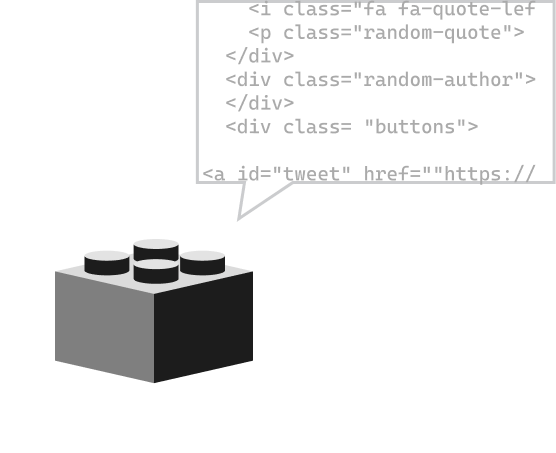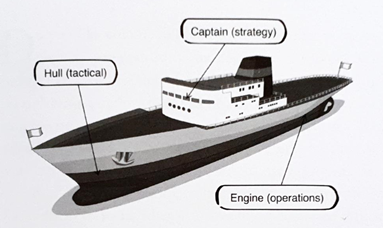Building blocks of a customer success practice
Jonathan Lee
ISSI Customer Success Practice Lead

Customer Success Practice Blog Series #3
As mentioned in my previous blog posts, building a Practice is a rather comprehensive process and many organizations have underestimated the complexity. I would like to focus this blog on the building blocks of a Customer Success Practice.
In my earlier blog post [1] , I advocated looking at the Practice in 3 main building blocks - Business, Process, and Tools. Borrowing the analogy created by Pat Bodin and Robert Schaffner [2] in their book “Get in the boat - A journey to relevance," I will associate 3 building blocks of the practice into the following:
- Captain (Strategy) - Business domain
- Hull (Tactical) - Process domain
- Engine (Operations) - Tools domain


Captain (Strategy) - Business Block
Similar to the captain providing the direction to the boat, a Practice needs to start with a Business Model. Without a proper charter/strategy/business plan, it will affect subsequent actions such as an investment plan, resources, tactics, etc. As Kenichi Ohmae also said, “Rowing harder doesn't help if the boat is headed in the wrong direction" [3].
There are 3 major components in the business domain - Charter, Executive Sponsor, and Business Plan.
The charter defines the existence of the practice; it captures the mission and vision and moves away from being an afterthought. More importantly, it provides internal alignment - clarifying the role of Customer Success and ensuring a focused effort, bringing different teams together.
Complimenting the charter is the need to have an Executive Sponsor. Executive Sponsor provides the link to the organization's leadership, owns the accountability, and ensures that the practice is supported with the necessary investment, direction, guidance, and alignment.
Last but not least, the high-level charter needs to be translated into an “executable business plan" with goals/targets, a financial funding model, resources investment, a Go-To-Market plan, tactics, etc.
Hull (Tactical) - Process Block
The hull supports the entire ship and provides a means to reach the destination. A documented process is the “hull" of the practice.
As Customer Success is a relatively new methodology, there is a need to create a new set of playbooks to define the Land-Adopt-Expand-Renew (LAER) process. The playbook should include a detailed hand-off between the different teams at the different stages of the LAER model; this can be in the form of Swim-lane, RACI chart, flow chart, or any other representations.

Just like a Project Plan is used to ensure the smooth implementation of a project, a Customer Success Plan (CSP) (AKA Adoption plan or Success Plan) is used to document the customer intended business outcomes of their new service and the related adoption activities. The CSP should capture the current baseline, the intended outcomes, the timeline, and an adoption plan to support the usage of the new service that leads to the realization of the outcomes. The adoption plan could include activities such as “knowledge transfer," use case workshop, communication plan, etc.
The Customer Success Plan is becoming an integral part of the project implementation (especially subscription-based); Cloud vendors such as Google are now requiring their Managed Service Partners to have a Customer Success Plan as part of their post-migration excellence process.
Engine (Operations) - Tools Block
The engine propels the boat and accelerates the journey toward the destination. Similarly, Tools help to automate and optimize the Customer Success operation.
Tools are used in every aspect of the IT operation, from the ITIL processes to the IT monitoring to customer management through CRM. Hence, it is no surprise that Customer Success has its own set of tools to support and scale the operation.
In the world of Customer Success, the Customer Success Manager (CSM) uses a “Customer Health Score" to understand the health of the customer account and provides an assessment of the likelihood of renewal, the potential for Expand, and customer advocacy. The Customer Health score is a dashboard of subjective and objective metrics such as license usage, subscription traffic utilization, golden features activation, financial growth, customer satisfaction, etc. These parameters are fed from various sources and require constant refresh and update to provide CSM with an accurate picture of the latest status.
Using manual methods such as Microsoft Excel is not efficient or effective, and it does not scale. Hence, to manage the Customer Health dashboard effectively as well as to trigger the associated Call-To-Action (CTA) plan will require a proper “Customer Success Tool."
In general, there are two routes to implementing a Customer Success Tool.
- “Purpose Built" Customer Success tools, e.g.Totango and Gainsight, provide a good representation of the various Customer Success applications available today. This is probably the easier and faster route since the organization just needs to upload the data and configure the tool. However, organizations need to budget accordingly.
- Re-purpose existing tools - These can be CRM, ERP, Sales automation tools, or in-house tools. There is potential for these existing tools to be re-purposed to the Customer Success environment. However, it will take a much longer time and effort since they are not designed for Customer Success in the first place. This route is probably for the organization that has the time and programming resources to do the necessary customization.
The Customer Success Tool is the core of Customer Success Practice; vendors such as Cisco Systems require their Partners in the Advanced Customer Experience Specialization to have a Customer Success tool. Hence, it is time for organizations to recognize the importance of the tool and start investing in it.
To Recap
The Top 3 building blocks of a Customer Success Practice are:
- Business block - including Charter, Executive Sponsor, and business plan
- Process block - LAER process playbooks and Customer Success Plan/Adoption Plan
- Tools block - Customer Success tool to automate the Health Score & scale the practice
If you want to learn more about 3rd party services, ISSI has a suite of services, including Customer Success enablement workshops for the above 3 blocks; you can refer to the ISSI website https://issi-inc.com/issi-consulting-services-portfolio/. Feel free to contact us via email at sales@issi-inc.com for further information.
Jonathan WM Lee is the Customer Success Practice Lead. He holds the following certifications - Prosci Certified Change Management, Cisco Customer Success Manager, Microsoft Services Adoption Specialist and has extensive experience of over 100 engagements in training, consulting, and auditing of Customer Success programs, processes, and tools. He is the co-author of the Cisco Advanced Customer Experience Specialization Checklist and Juniper Networks Business Model Transformation Blueprint/Playbook. He has previously spoken in the ISSI-TSIA webinar on “Identifying Strengths & Gaps of your CS Practice." [4]
References
- ISSI Blog “You need to assess your Customer Success practice readiness. Here is why & how."
- “Get in the boat - A journey to relevance" by Pat Bodin and Robert Schaffner ISBN 978-1-946203-20-5
https://www.amazon.com/Get-Boat-Relevance-Pat-Bodin/dp/1946203203 - Rowing harder doesn't help if the boat is headed in the wrong direction. By Kenichi Ohmae
https://philosiblog.com/2013/06/27/rowing-harder-doesnt-help-if-the-boat-is-headed-in-the-wrong-direction/ - ISSI-TSIA webinar on “Identifying Strengths & Gaps of your CS Practice."
https://www.tsia.com/webinars/identifying-the-strengths-and-gaps-of-your-customer-success-practice
Additional Articles
Building a solid strategy for becoming a cloud managed service provider
Barry Turner, ISSI Head of Global Marketing & Senior ConsultantCloud Management Platforms: A Core Component in Growing Your Managed Services Business By Amarnath Gutta, Senior Consultant, ISSI In our work with partners through workshops,
Microsoft's AI Cloud Partner Program: A New Way to Empower Partners
Pablo Marrone, ISSI Senior ConsultantThese start with the most basic - Membership - which is open to all channel partners. From there they progress through partner success; the attainment of “designations” based on partner capability scores; and finally, “specializations” that
You need to assess your customer success practice readiness. Here is why & how.
Jonathan Lee, ISSI Customer Success Practice LeadYou need to assess your Customer Success practice readiness. Here is why & how. By Jonathan Lee – ISSI Customer Success Practice Lead Customer Success
- 08 JUL 2024
Unlocking Growth Potential: Managed Security Services for Partners
Victor Vleeschower, ISSI Senior ConsultantIn an era when digitalization is the norm across industries, the importance of robust cybersecurity measures cannot be underestimated. As businesses increasingly...
15 DEC 2023Monetization in customer success – Reality or Myth
Jonathan Lee, ISSI Customer Success Practice LeadMonetization in Customer Success – Reality or Myth By Jonathan Lee – ISSI Customer Success Practice Lead Customer Success Practice Blog Series #6 In my
06 FEB 2024The ways that partners can make money
Barry Turner, Senior Consultant, ISSIThe Ways That Partners Can Make Money By Barry Turner - Senior Consultant, ISSI One of the questions that ISSI hears from the cloud vendors
